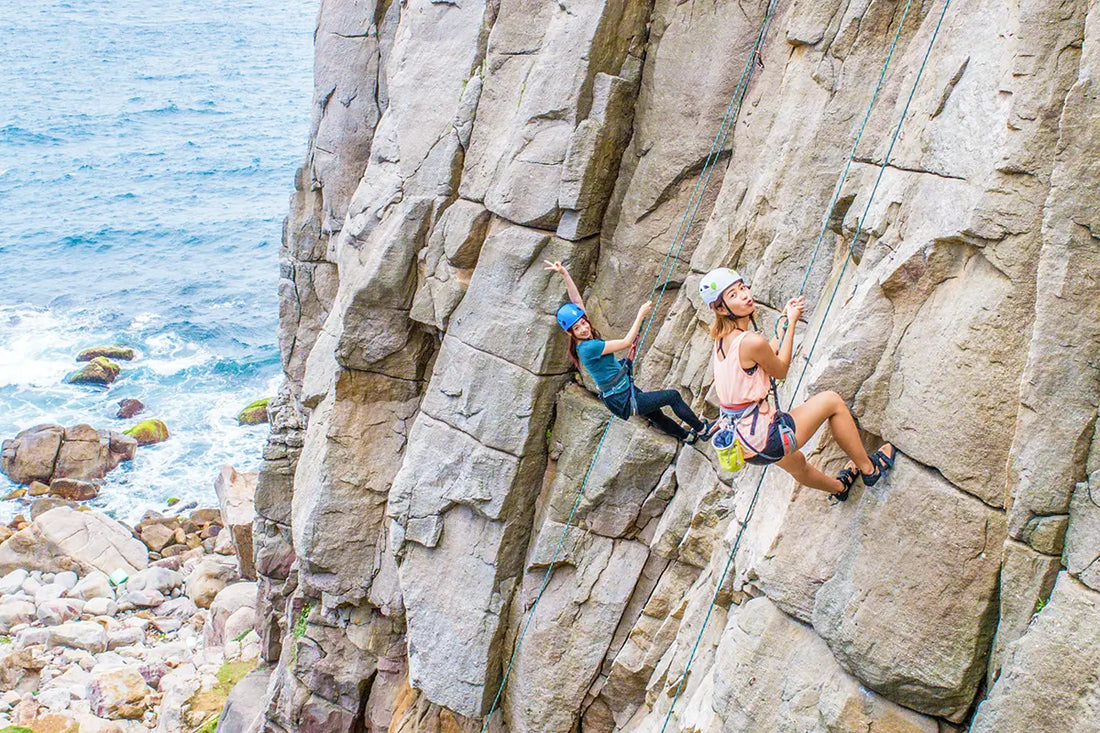
Philosophy of Climbing: Is Life Just an Endless Rock Face?
Viewing life’s choices, failures, and growth through the lens of rock climbing
Life often feels like an endless rock face—an ever-changing wall of challenges, risks, and triumphs. Some days, we ascend smoothly, our movements precise and confident. Other days, we slip, fall, and question why we even started climbing in the first place. Yet, just as in rock climbing, life’s journey is not about reaching the summit as quickly as possible, but about the process of learning, adapting, and pushing beyond our perceived limits.
1. The Art of Choosing a Route: Life’s Infinite Possibilities
In climbing, the route you take defines your experience. Some paths are straightforward but require endurance, while others are technical and demand agility and problem-solving. Life is much the same. Every decision—career choices, relationships, personal growth—is like selecting a new route on the rock face.
Some climbers prefer to follow well-established routes, relying on guidance from those who have gone before them. Others seek uncharted paths, embracing uncertainty and the thrill of discovery. Neither approach is wrong, just as in life, where some prefer stability while others crave adventure. The key is knowing yourself—understanding your strengths, fears, and aspirations—to choose the path that aligns with your values.
2. Falling as a Lesson, Not a Failure
One of the first things climbers learn is how to fall. Falling is not the end—it is part of the process. In fact, every great climber has fallen countless times before mastering a route. Life, too, is filled with falls: failed relationships, lost jobs, abandoned dreams. But failure is never final unless you refuse to try again.
Just like a climber tightens their grip and refines their technique after a fall, we must take each failure as an opportunity for growth. It’s not about avoiding failure but about learning how to recover, adjust, and move forward with greater wisdom.
3. The Role of Fear: Friend or Foe?
Fear is an inevitable part of climbing. The higher you go, the stronger the fear of falling becomes. Yet, experienced climbers don’t let fear paralyze them; they use it as fuel to stay focused, cautious, and aware.
In life, fear often holds us back—fear of rejection, fear of change, fear of not being good enough. But what if we treated fear as a natural companion rather than an enemy? Instead of seeing fear as a sign to stop, we can view it as proof that we are pushing beyond our comfort zone. The key is not to eliminate fear but to climb with it, allowing it to sharpen our focus rather than limit our potential.
4. Trusting Your Holds and Support System
Climbers rely on their grip, their balance, and their ability to assess each hold. However, they also rely on their gear, their belayer, and their team. Trust is a fundamental aspect of climbing, just as it is in life.
We are not meant to climb alone. Friends, family, mentors, and partners act as our belay system, supporting us in moments of struggle and helping us regain our footing when we slip. Learning to trust others—and ourselves—is essential. True strength is not about going solo but knowing when to lean on those who have your back.
5. The Joy of the Ascent: Process Over Destination
Many climbers describe a deep sense of fulfillment not at the peak, but during the climb itself—the problem-solving, the physical challenge, the feeling of flow. Similarly, in life, we often think happiness lies in achieving success, reaching a goal, or obtaining something we desire. But true fulfillment is found in the journey, not just the destination.
When we stop obsessing over reaching “the top” and start embracing the process, we find meaning in every moment—every small victory, every lesson learned, every challenge overcome.
Conclusion: Keep Climbing
If life is an endless rock face, then the key to fulfillment is not in reaching a final peak but in embracing the climb itself. Choose your route wisely, accept failure as part of the process, make peace with fear, trust in yourself and those who support you, and, most importantly, enjoy the journey.
Because in the end, it’s not about how high you climb, but how much you grow along the way.
